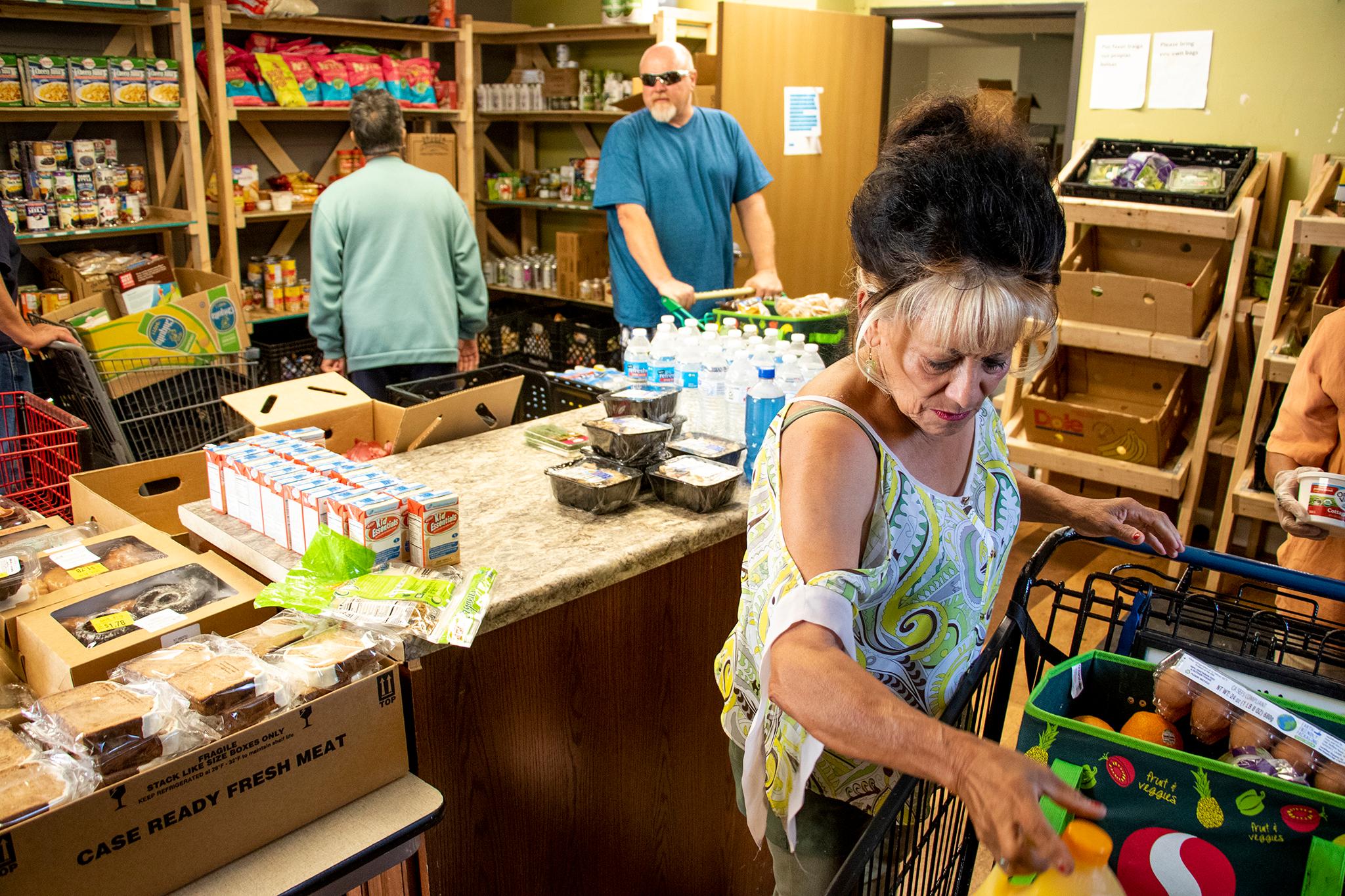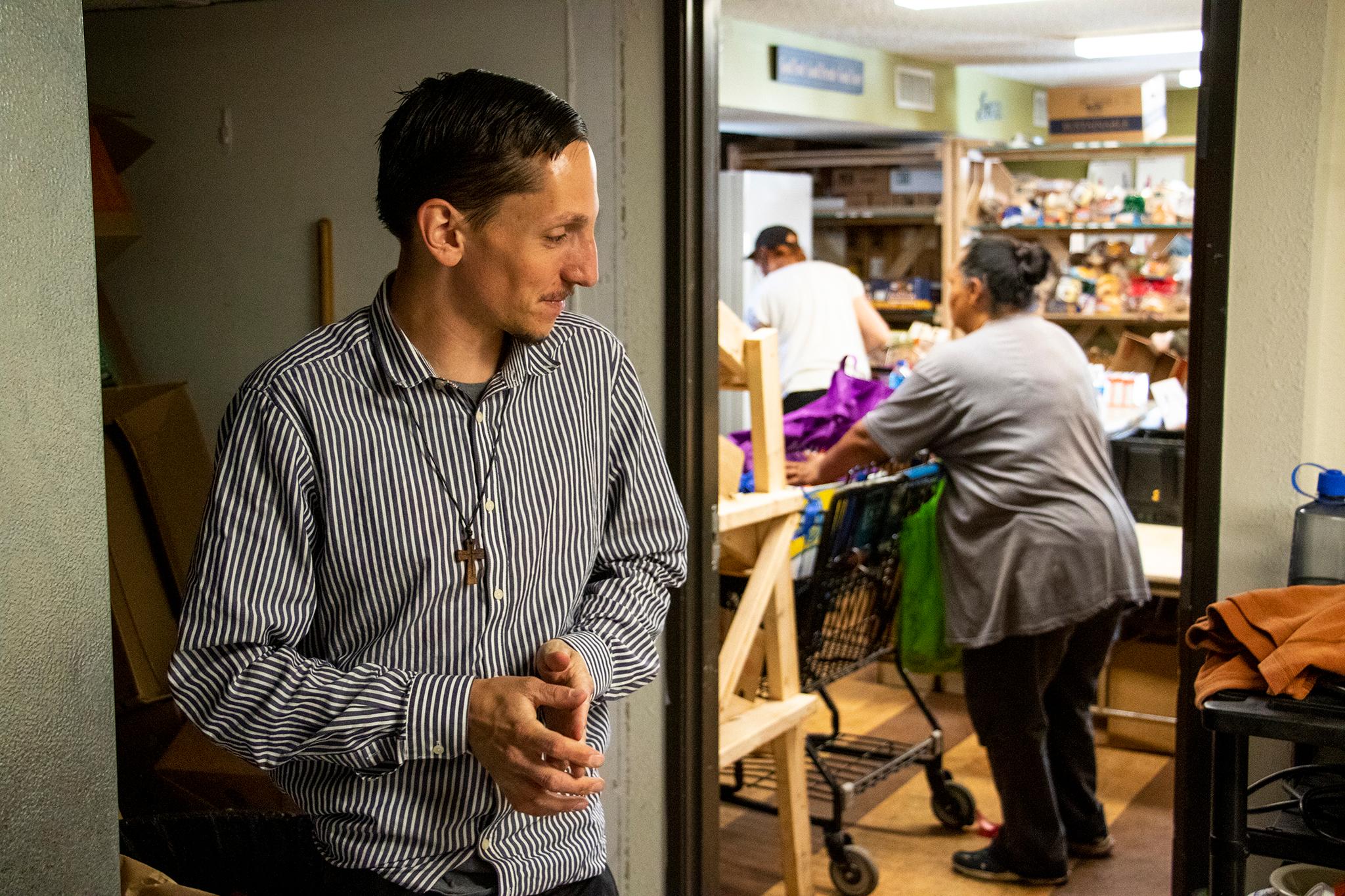After interviewing more than 100 food pantry clients and compiling data on hunger, health, housing and jobs, University of Colorado Denver student researchers were struck by the things that are hard to put a number on.
Sociology master's student Evyn Taylor noticed that the people who regularly picked up groceries at Denver Inner City Parish in La Alma-Lincoln Park had formed a supportive community.
"People know each other's names and are hanging out, asking about each other's children," she said.
Fellow grad student Danielle Maestas interviewed older people for whom lunch at the parish community center might be their only daily meal, and not necessarily because they could not afford more.
"Some of my seniors, they lost their spouse and didn't want to eat alone" at home, said Maestas, who since completing the research this spring has occasionally returned to the parish to help set up for the senior lunches.
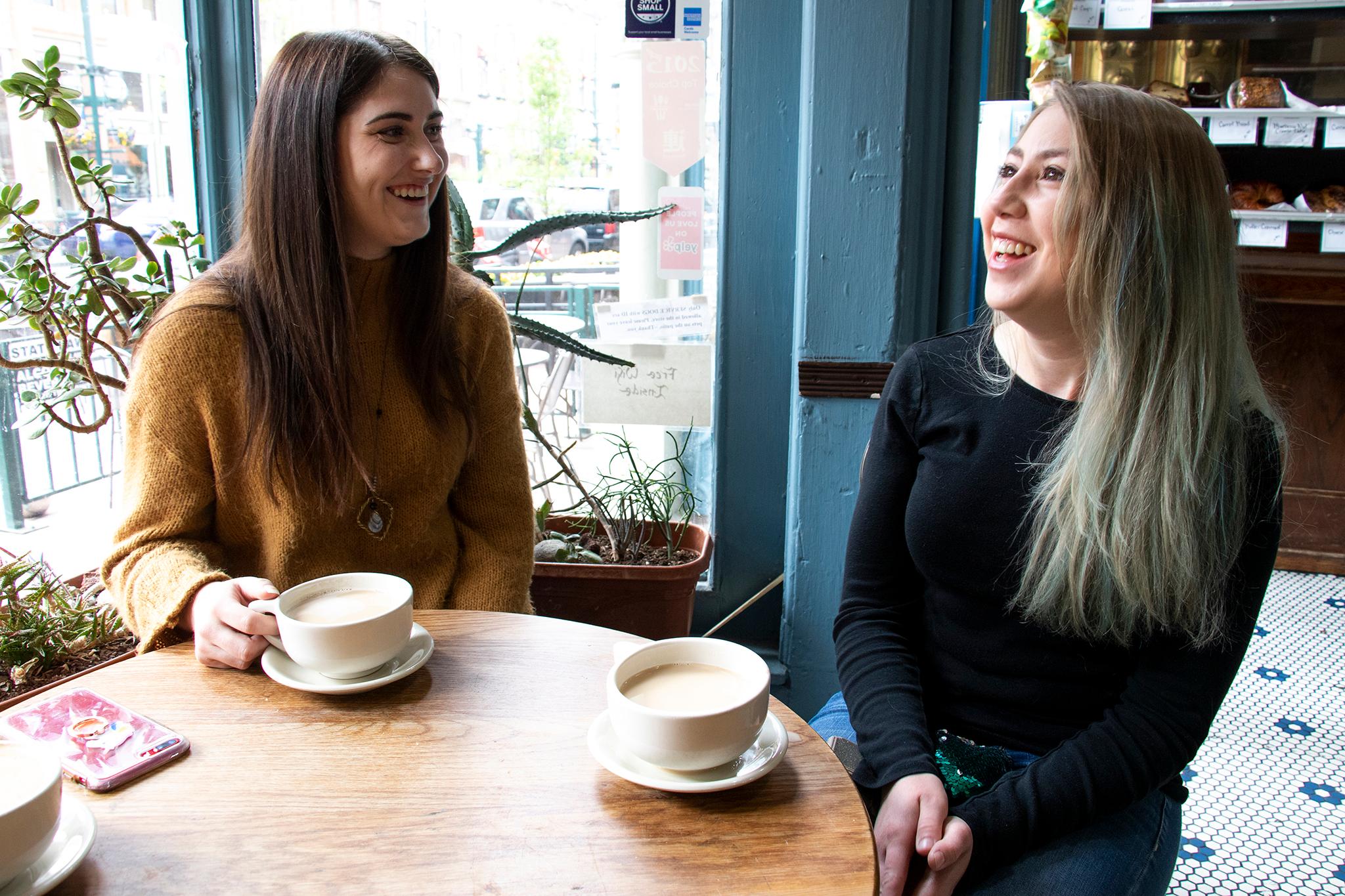
Michael Bruno, who runs the pantry, said he'll make good use of the information compiled and analyzed by Taylor, Maestas and eight other students -- half grads, half undergrads -- in sociologist Adam Lippert's Health Disparities class. And Bruno said the benefits were mutual, opening the students' "eyes to what's going on in the community and the various ways we can help."
The final report was presented to Bruno and Inner City Executive Director Larry Martinez earlier this month in a professional-style presentation that was a first for the students.
"My students really ran with it," Lippert said.
They found, among other data points, that 60 percent of those surveyed used the pantry as often as allowed, which is twice a month. That showed the pantry, which is operated like a free grocery store and open three mornings a week, was meeting a need, Lippert said.
"If there's cause for optimism, it's that organizations like the Denver parish really are doing their job," Lippert said. "I've seen how many people come through .... It's quite remarkable."
Lippert is an expert on health, demographics and the kind of analysis he taught his students through the parish project. His own research includes a current study with a Penn State colleague of how parents in food insecure families shield their children from hunger.
Across the country, 12 percent of households can't reliably access enough to eat. In Denver, it's about 16 percent. The numbers are high, especially for an advanced economy, Lippert said.
Parish food pantry clients also struggle with housing insecurity, the student researchers found. Only about 20 percent could count on housing and 10 to 20 percent were experiencing homelessness. The rest had stable housing, in some cases thanks to government subsidies.
Six in ten of the pantry's clients reported their households had run out of food and had no money to buy more in the previous month. One in four reported going a day without eating.
CU Denver student Taylor said that in more than one of the interviews the students conducted at the parish during a week in mid-April, the same person would say he or she was employed but still did not always have enough to eat.
"People have the assumption that if you have a job you're able to provide what you need. Which is not the case," Taylor said.
Taylor took it upon herself to raise about $500 -- in part by tapping her mother's business contacts -- so that she and her fellow researchers could offer $5 grocery gift cards to the pantry clients they interviewed. Taylor said she did not want to take the time of people who are struggling and benefit from the information they shared without giving something back.
Martinez, the parish's executive director, said the working poor the students met illustrate the growing gap between incomes and cost of living, and between the experience of high and low earners.
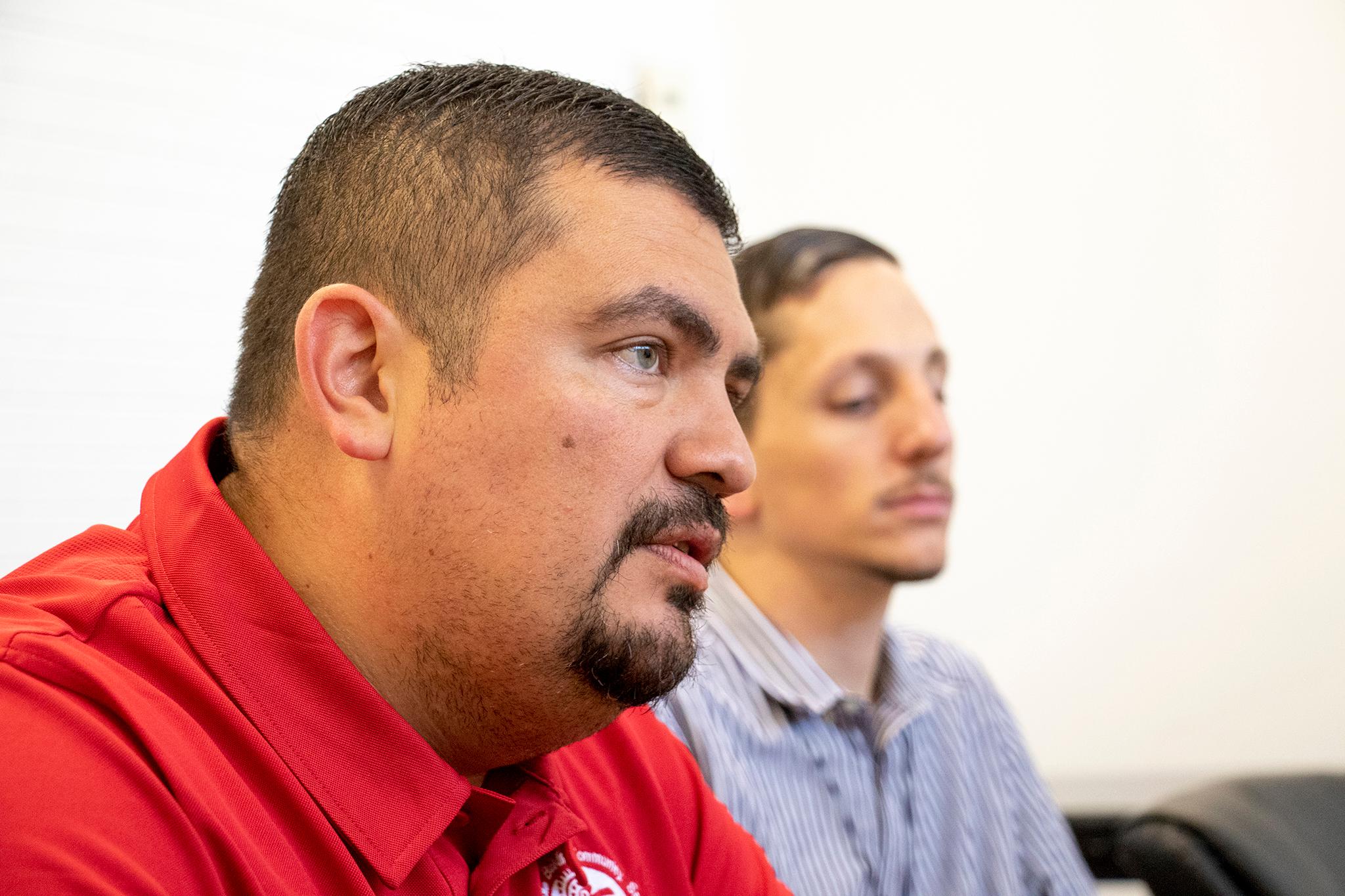
Evidence of economic growth "only measures how well wealthy people are doing," Martinez said.
"It doesn't capture people living on benefits."
Lippert said 60 percent of those surveyed were receiving benefits under the Supplemental Nutrition Assistance Program or SNAP, what was once known as food stamps. He said many of the 40 percent not receiving the federal food benefit were eligible.
"There's clearly some unmet needs," Lippert said.
Martinez and Bruno said one of the ways they would be using the report written by Lippert and his students would be as evidence in conversations with policy makers about the importance of federal food aid and of the work of pantries and food banks.
"The need is only increasing, unfortunately," Bruno said.
In the past year, he said, the average number of visitors has increased from about 30 people at the start of the morning and about 60 at the end to 40 to 45 at the start and 65 to 70 at the end.
Martinez said: "There's no way that the charitable food system can do it alone."
Martinez added that he lobbies lawmakers from the position that "it's the responsibility of the government to make sure people don't go hungry."
With the CU Denver report in hand, the parish can show "we're not just trying to be a Band-Aid on the problem," Bruno said. "We're trying to innovate and educate people."
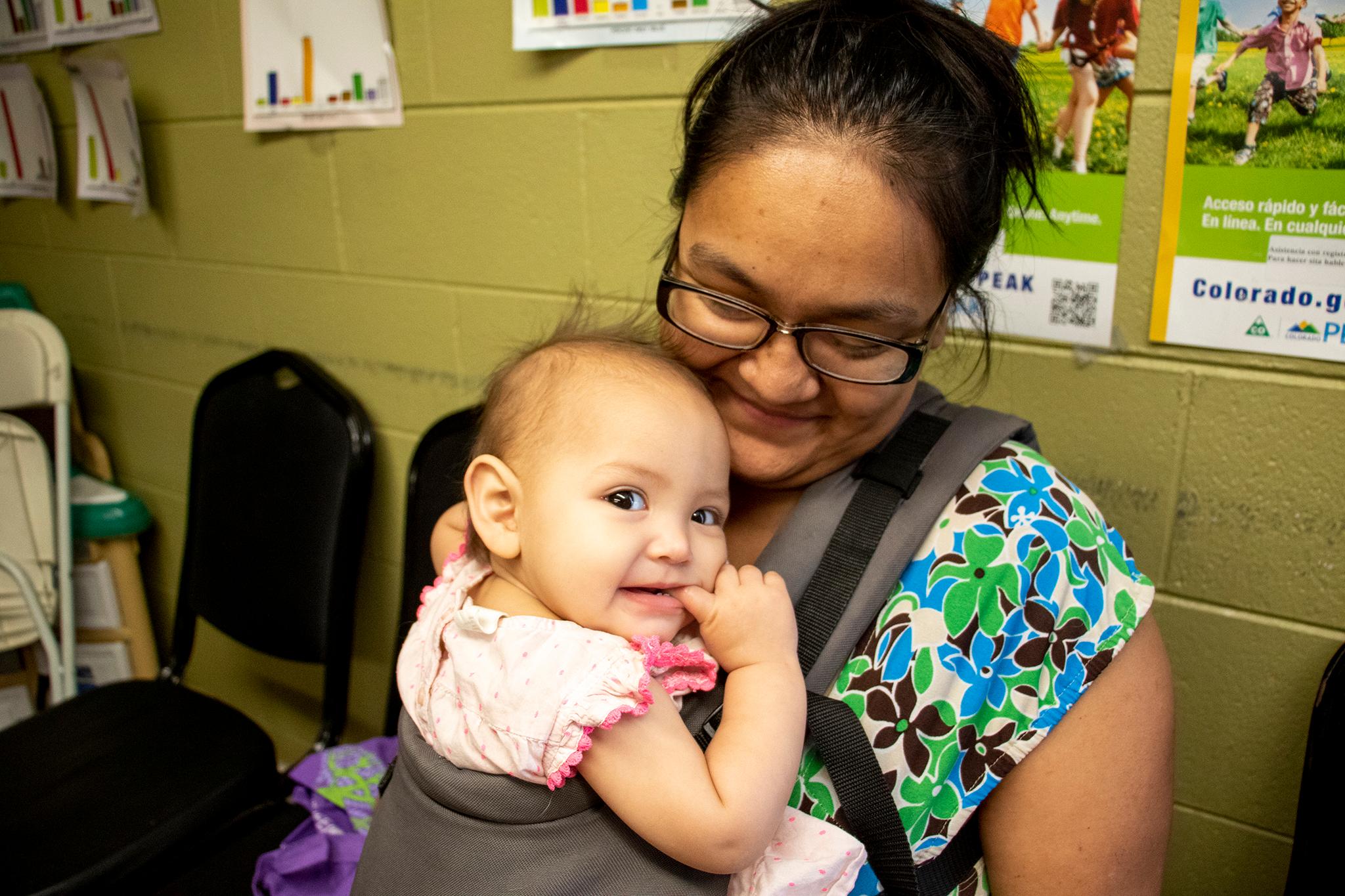
In addition to a survey of 104 pantry clients, CU Denver student Maestas conducted in-depth interviews with seven people taking part in a pilot begun in January designed to encourage healthier eating habits among seniors. She looked at the parish's Veggie Rx, modeled after similar programs that have been successful elsewhere in the country. Veggie Rx offers nutrition classes, recipes for participants to try, even a guided tour of a supermarket. Maestas observed those activities in addition to speaking with the participants. She learned that after Veggie Rx, seniors reported avoiding the cakes and cookies offered at the pantry and instead loading up on fruits and vegetables.
The seniors also told Maestas they believed more people would take part in Veggie Rx if they had a way to get to the community center where the classes are held and the food pantry is located. Bruno said that because the students' report highlighted transportation issues he was considering using a van to pick people up on pantry days.
The fundraising by Taylor and Maestas's request to do a side study impressed their professor. Lippert said he thought to himself: "'Wow, you want to do extra work?' I was pretty stoked."
Bruno is looking forward to working more with CU Denver students. Perhaps the next study, he said, can further explore the impact of SNAP.
Denver Inner City Parish was established in 1960 to serve what was then the South Lincoln Homes, a housing project the Denver Housing Authority later demolished and replaced with mixed-income Mariposa District development. The founders of the parish wanted to fill a gap being left by churches, which had been the neighborhood's safety net and were moving to the suburbs with their congregations. Despite its name and origins, the parish has no religious affiliation.
Martinez has worked for the parish for 25 years, starting as a young volunteer sorting food. He has seen the operation change from a place where donations were packed into boxes to be handed out to recipients.
"I would watch people when they would leave our building and go right to the trash can, they would throw away what they didn't want," he said.
That changed in the mid-2000s when many pantries began operating more like grocery stores -- albeit with no cashiers -- to offer their clients more choice. Martinez's parish conducted the first of its own client surveys in 2009. The tradition of those surveys was one of the reasons Martinez was receptive when Lippert approached him with the idea of his class conducting a study.

"It's important for us to be able to get feedback, (to know) what is it that we can be doing better," Martinez said.
Clients have made clear over the years that they want fresh produce. That has helped spur changes in the way parish partners like the Food Bank of the Rockies operate, Martinez said. His parish also gets supplies from the food rescue nonprofit We Don't Waste as well as churches and other groups that hold food drives on its behalf. Pantry staff conduct their own food rescues as well, picking up supplies that Target, Walmart and Loaf 'N Jug might otherwise discard.
Wednesday, pantry clients found fresh bell peppers, asparagus, onions, apples, citrus and kale along with canned soups and vegetables, dairy products, bread, pastries and meats.
"Food has always been at the center of our mission," Martinez said.
Parish visitors can also get help with housing and job searches.
"So many times, there's not just one issue going on," Bruno said. "Food is only one solution. There's many other things that need to be done to lift people out of poverty."
